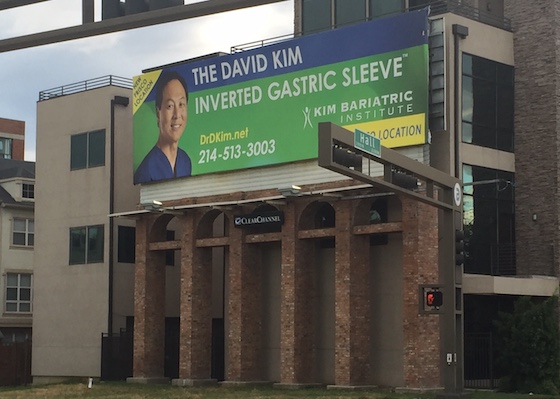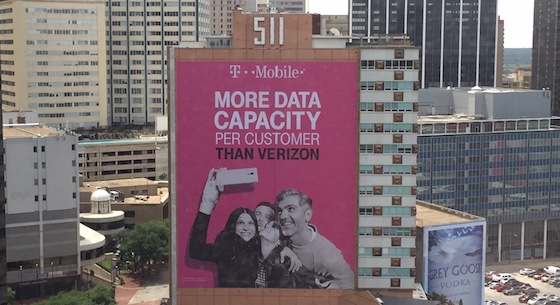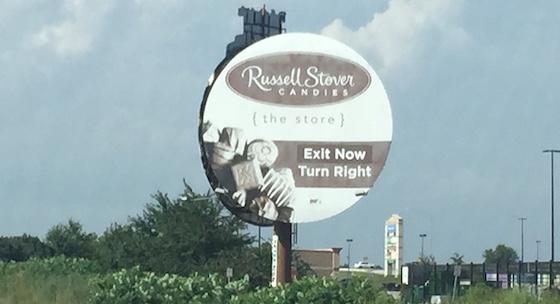Memo From Frank
When I went into the billboard business – straight out of Stanford University – everyone thought I was a fool. So I thought that April Fool’s Day is a good time to discuss the fact that you sometimes have to do things without listening to the herd. Most Stanford graduates go into law, medicine or Wall Street, I was not interested in those concepts. I wanted to own my own company and work only for myself. And billboards looked to me like my best shot. My reasoning was that, if I failed to build enough signs to fully support myself as a full-time job, I would worst case end up with a great income stream for the rest of my life while I went into something else. But most people simply could not understand my concept. So while they went on to graduate school and got normal jobs, most of them thought I was just being foolish and wasting my time. The truth was that I went on to become much more successful than any of them, and it turned out that they were the ones that had a foolhardy plan. So if you think that April Fool’s Day is all about practical jokes, I’ll give you another theme: it’s the day to remember that nobody knows more about what’s right for you, than you. Listen to no one but yourself when you hatch your plans, as nobody can judge them as well as you can.
Sometimes The Key Part Of Getting A Ground Lease Is Getting Rid Of The Poles

Most property owners like money. They like getting every dollar they can from their property. They really want to sign your billboard lease, but there’s one little problem: they don’t’ think that it’s worth how ugly the sign will be and how it will damage their ability to rent or sell the land beneath it. So how can you get around these concerns?
Nobody likes a billboard from the ground
Let’s be totally honest – billboards are ugly from the ground. They always have been. Their beauty is in the ad itself or the income, but they have never been known for their attractiveness. So it’s perfectly reasonable for the landowner to be concerned. There’s no way you’re going to be able to convince them that it’s not a problem, because it is. So don’t insult their intelligence. Instead, see things from their perspective. If the sign is in a remote area or behind a building, then it probably is not an issue. But if the billboard is in front of a building or in a busy parking lot, then take the bull by the horns.
Plentiful options
The good news is that there are many options to hide the billboard pole or poles. The least expensive option is to paint the poles to match the building. Sometimes, that’s all you have to do. But after that, the options start to cost money. Many of them are extremely creative. I’ve seen mirrored poles using mylar wraps, and I’ve seen poles that have actual fake tree greenery branches attached to them. I’ve covered poles in brick and stucco. Look at what’s around you and put your creative hat on. In many cases – even if the disguise is expensive – you can wrap that additional cost into your loan for the billboard’s construction and it will not make or break the deal. The most I’ve ever spent in hiding a billboard column was when I put brick around it from the ground to about 40’ in the air. It cost $10,000. That might sound like a lot, but it was only 20% of the total cost, and the sign was worth $40,000 more than I paid for it immediately following construction.
But some warnings
Although covering the sign’s pole or poles can open a lot of doors, you should be very aware of the future maintenance cost of whatever you decide. While that bricked column never broke on me, I covered another pole in stucco and it cracked all the time and had to be perpetually patched. The worst was when I tried to hide the column behind some tall, vertical shrubs. Every time I planted them, they died. Nobody would water them, and it never rained. It cost me like $1,000 to put them back every six months, and the land owner would not let me out of that promise.
Conclusion
Sometimes the most important part of getting a landowner to sign your billboard lease is to find an agreeable way to hide the pole or poles. This is a win/win opportunity to let your creativity save the day.
The Ultimate Billboard Boot Camp
![]() How to Find a Billboard Location
How to Find a Billboard Location
![]() How to Buy a Billboard
How to Buy a Billboard
![]() How to Build a Billboard
How to Build a Billboard
![]() How to Operate a Billboard
How to Operate a Billboard
![]() How to Rent Ad Space on a Billboard
How to Rent Ad Space on a Billboard
![]() How to Sell a Billboard
How to Sell a Billboard
Get Your Copy Now!
Taking Advantage Of Loopholes In Billboard Ordinances

The Highway Beautification Act of 1965 was just like any other law. It was not perfect. After its adoption – and the subsequent enactment by states and cities along the same basic guidelines – billboard companies began to find ways around some of its principles. Here is a list of some of the key loopholes that people have focused on over the past several decades – and ones that you should be aware of.
The 660’ loophole
When the Highway Beautification Act was originally written, they had to have a specific measurement on which the U.S. government could control billboards. So they chose 660” back from the right-of-way. That means (although you need to confirm this in your state and city) that billboards that are more than 660’ off of the right-of-way are not controlled under the Act. That’s why you will sometimes see these billboards that are way off the highway in areas where you see no other billboards. That’s also why some people have been successful taking natural objects – such as grain elevators – that are more than 660’ off the road and vinyl wrapping them. The biggest complication to this loophole is that signs have to be gigantic to be seen from 660’ off the road, so they are expensive to build and maintain. It’s also hard to rent the billboard space unless there are no competing units right on the edge of the road.
The premise sign loophole
This one is very ambiguous, and is more of a definitional item than a loophole for examination. Billboards are classified as “non-premise” advertising (meaning they don’t advertise things sold on the property) while signs for your business are classified as “premise”. While non-premise is controlled by the Highway Beautification Act, premise signs are not. So here’s where it gets weird. If you sell a product on the property – let’s say a Coke vending machine – can you put Coke on that sign and have it called a “premise” advertisement? Nobody knows for sure. Some cities have tried to greater define what constitutes “premise” but it’s still really hard to do.
The two-business rule loophole
Under the Highway Beautification Act, you have two types of zoning that billboards can be placed on: 1) zoned commercial in a city limits and 2) un-zoned commercial in the county. Un-zoned commercial, under many ordinances, is defined as two business side-by-side, which often triggers up to three billboards to be built. Years ago, billboard companies figured out that they could create this zoning by finding an existing business along the highway and then building one next to it themselves. Think about it. You could open an antiques store with a $2,000 portable building and $1,000 of old junk put in and around that building with an “Antiques” sign over the door. While many states have tried to clamp down on this practice by requiring that such businesses have higher capital investment like working bathrooms, you still can’t stop the fact that billboard companies can artificially create this occurrence, and with signs being so valuable it’s not that hard to rationalize the numbers.
Conclusion
This article is not to suggest that you should try to take advantage of loopholes, nor do I have complete knowledge if any of these would work in your specific state or city. However, it’s important that anyone in the billboard business knows these basic issues, as they could have bearing on your market selection.
Should All Billboards Be Rectangular?

We are used to seeing all billboards with a rectangular shape. It’s been that way since the industry began, and the sizes were perfected back in the 1920s by Foster & Kleiser and their test lab. But was it a good idea? And should you stick with that tradition?
How they got that way
Foster & Kleiser was an early sign posting outfit from the turn of the century. They were into billboards back when they were wallpapered to walls and were designed to reach bicyclists and pedestrians (before cars were invented). When cars came out and they saw opportunity in this new market, they built a test lab which was nothing more than a piece of road and some wooden poles on which they placed differing sized ads and drove by them. This mock-up resulted in the standard sign sizes – such as 14’ x 48’ – that we still use today.
How vinyl changed things
Of course, Foster & Kleiser’s choices had additional motives. Back then, all signs were hand-painted and that meant that the top of the sign had to hold the scaffolding “hooks”. It had to be flat and straight. However, the advent of vinyl means that painters no longer have to hang on the sign, nor does the top have to be flat and straight.
The benefits of being different
Some sign companies have tried to harness this change and to create signs that shaped differently and, as a result, garner attention. The sign shown above is in Branson, Missouri, and it definitely looks different than the rectangular signs around it.
The big downside in being different
However, here’s the problem with being different. When you want to sell your billboard some day, the buyer (if it’s a big company) will want it to be standardized and match their other signs. On top of that, most of your big-time advertisers out there – like McDoalds – have standardized designs that only fit on rectangular signs. These are some pretty big dangers in being different.
Conclusion
While you don’t have to stick with the traditional billboard shapes, there is great downside to being different. Unless you can come up with a compelling argument, you’re probably better off sticking with the standard sizes out there.
